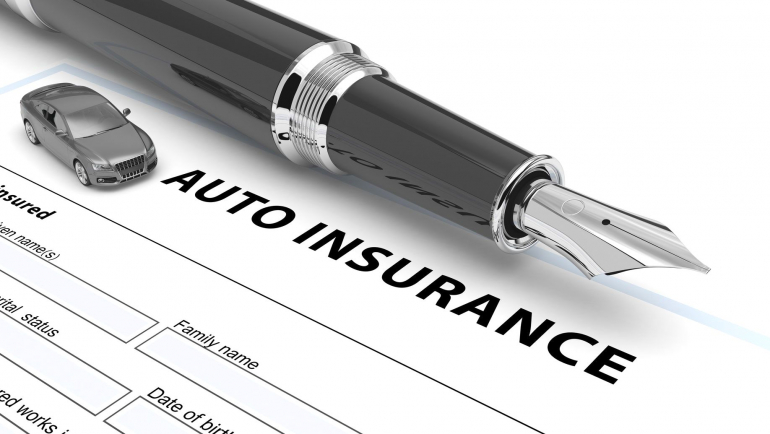To understand your auto insurance policy, think of it as six separate policies. Some types of coverage are mandatory and some others are optional. It depends on where you live as it is mandated by state law. As each type of policy has its own premium and is priced separately, the total price of your auto insurance policy may differ. To gain some control over the final price, you may subtract optional policies that are not needed.
While particular states have separate mandates for auto insurance coverage, the most basic auto insurance policy consists of the following six types of insurance: bodily injury liability, property damage liability, personal injury protection, collision, comprehensive and uninsured/underinsured motorist.

Table of Contents
- Bodily Injury Liability Coverage (BI)
- Property Damage Liability Coverage
- Collision Coverage
- Comprehensive Coverage
- Medical Payments Coverage (MedPay/MPC)
- Personal Injury Protection Coverage (PIP)
- Uninsured and Underinsured Motorist Coverage (UM/UIM)
- How to read an auto insurance policy?
- Declarations Page
- Insuring Agreement
- Conditions of the Policy
Bodily Injury Liability Coverage (BI)
Bodily injury liability coverage applies to the policyholder or designated driver who caused bodily injuries to someone else. The policyholder’s family members who had an accident while driving someone else’s car are also covered if they are listed on the policy and had permission to drive the car.
As some car accidents are serious, a driver may be sued for a large sum of money. To avoid the legal costs of a lawsuit and protect other assets such as homes or savings, it is recommended to buy more than the state-required liability insurance. State mandates differ regarding minimum mandatory auto liability insurance coverage, but financial experts recommend carrying at least $300,000 per occurrence and at least $100,000 per person.
Back to topProperty Damage Liability Coverage
Property damage liability coverage covers damage that you cause to someone else’s vehicle or property. It is usually a car, but the term property includes damage done to buildings, garage doors, utility poles, or lamp posts, and some other structures where a car can hit. State laws determine the minimum property damage liability coverage. Damage to your car is usually not covered by property damage liability coverage. To cover the cost to repair your car, you need to buy other coverages such as collision coverage.
Different states have different mandatory coverage limits. You may always decide to buy a limit higher than the mandatory required by your state because when the value of the damage you cause exceeds the coverage limit you carry, you will probably have to pay the difference out of pocket in case of an at-fault accident. For instance, in New York, drivers are required to have at least $10,000 of property damage liability coverage, whereas in California, it is $5,000, and in Texas, the mandatory property damage liability coverage amounts to $25,000. In general, the higher the coverage limits you set, the higher the insurance premiums you will need to pay.
Back to topCollision Coverage
Collision coverage covers costs for damage to your car consequent on a collision with another car, or an object, such as a utility pole, or lamp post, or as a result of flipping over. Damage caused by potholes is also covered by collision coverage, but the collision with deer is covered under comprehensive coverage. Although collision coverage is not required by law, banks usually require it if you want to get a car loan and finance a vehicle through a bank.
Collision coverage is customarily sold with a deductible which is an amount of money that you pay toward an insured loss. When you have a car accident, the deductible is subtracted from your payment claim, which basically means you have to pay out-of-pocket for a claim before the insurance company gets a claim under way. Fortunately, your collision coverage will refund the costs of repairing your car, minus the deductible, even if an accident is your fault. If you're not at fault for an accident, your insurance company has a chance to successfully recover the amount they paid you from the other driver’s insurance company. Your deductible will also be reimbursed if they succeed.
Back to topComprehensive Coverage
Comprehensive coverage reimburses you for the costs of loss resulting from damage other than collisions. It covers events such as:
- Theft of the car, or parts of it;
- Fire;
- Natural disasters such as floods, tornadoes, hurricanes, earthquakes, and volcanic eruptions;
- Contact with animals such as deer or birds;
- Fallen objects such as ice, branches, trees, or projectiles;
- Riots and vandalism
- Broken windshield
Comprehensive coverage is optional, but if you have an auto loan, your bank may require you to carry both comprehensive and collision coverage. The annual average cost totals approximately $134. Comprehensive insurance is generally purchased with a separate deductible, although some insurance companies offer the glass portion of the coverage without a deductible. To reduce your insurance premiums, it is recommended to take a higher deductible, but with older cars, purchasing comprehensive coverage should be well-thought-out to make sure if it makes economic sense at all.
Back to topMedical Payments Coverage (MedPay/MPC)
As expected, medical payments coverage also called medical expenses or MedPay covers the costs of medical payments resulting from an accident. No matter who is at fault for the accident, this coverage protects you and covers your hospital expenses, medications, dental care, and even funeral expenses. In the case of high deductibles or low limits in your health insurance plan, medical expense coverage is a perfect go-to option because it fills in the gaps. It also helps pay for any injuries you sustain as a bicyclist or pedestrian. Finally, if your passengers sustain any injuries in a car accident you caused, their medical costs will be reimbursed by medical payments coverage.
Back to topPersonal Injury Protection Coverage (PIP)
Personal Injury Protection Coverage is similar, but different from medical payments overage. MedPay’s main goal is to cover medical bills, whereas PIP extends further. Regardless of fault, it covers both health and lost wages costs for you as a driver and your passengers who were involved in an accident. In contrast to bodily injury liability insurance, personal injury protection coverage doesn’t reimburse medical costs for damage done to other people. It is clear that PIP and MedPay overlap in some fields, but note that PIP was designed particularly for car-related injuries, mostly excluded from standard health insurance policies.
Note that the specifics of these two types of coverage may vary from state to state.
Back to topUninsured and Underinsured Motorist Coverage (UM/UIM)
Uninsured and underinsured motorist coverage covers the cost to repair or replace your car and your medical bills when you are hit by an uninsured driver or the one whose insurance is not sufficient to pay for your damage. Uninsured coverage is also brought into play if the other driver's insurance company denies their claim or is not financially able to pay it. If a policyholder is a victim of a hit-and-run or as a pedestrian is hit by an uninsured or underinsured driver, this coverage also offers protection.
State laws set if uninsured and underinsured motorist coverage is optional or mandatory. As you are never sure when you can have a dispute with an uninsured or underinsured driver, it is advisable to carry this coverage. The likelihood of taking part in an accident caused by uninsured drivers is different from state to state. Some states have the odds much higher than some others. Despite mandatory requirements set by all states to carry auto insurance, not everyone abides by the law. Surprisingly, as many as 13% of drivers nationwide didn’t maintain any coverage in 2015 so there is a strong possibility that you may face such a driver on the road and you will need uninsured motorist coverage.
Back to topHow to read an auto insurance policy?
An auto insurance policy is a legal contract so it usually seems to be confusing at first glance. Each auto insurance policy consists of three standard parts.
Back to topDeclarations Page
It includes a description of the insurance coverage and the maximum dollar limit an insurance company will pay a claim under coverage. You can also find there your name, the policy period, and the amount of premium you will pay.
Back to topInsuring Agreement
In this part, you can find the description of what the insurance company will do in exchange for the premium you will pay. The insuring agreement will state the names of the insureds, specifically a policyholder, other residents of his or her household, persons who have the permission of the policyholder to use the car. To avoid misunderstanding, the specifics are spelled out very clearly. It is advisable to read everything very carefully, especially the list of exclusions which includes circumstances when you are not covered by the policy.
Back to topConditions of the Policy
The last section of the policy determines your responsibilities as the insured in case of occurring a claim. It states how much time you have to report a claim and what documentation the insurance provider will need. It is possible to cancel a policy so the terms for canceling are explained. Generally, a policyholder may cancel their policy at any time, but an insurance company may only do it with advance notice and under certain conditions.
To choose the most cost-effective auto policy and get the coverage you need, it is recommended to compare car insurance quotes from several different insurance providers.
Like our content? Follow BUSINESS POWERHOUSE on LinkedIn, Twitter, Facebook, Instagram, and Pinterest to stay up-to-date on our latest articles.
Back to topAuthor: Justine Ilone Siporski is Editor-in-Chief & CEO of BUSINESS POWERHOUSE, the founder and CEO of LANGUAGE EMPIRE, coach, trainer, investor and columnist dedicated to the advancement of entrepreneurs, investors and the C-suite (CMOs, CEOs, CFOs, CIOs). Her key mission is to support leaders, business professionals, and investors in achieving their highest potential, making the right business and investing decisions, and expanding their horizons.






Comments